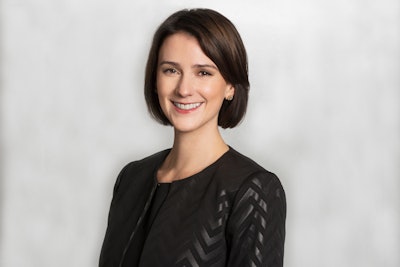
As the president of New York’s Downtown Alliance, Jessica Lappin serves as a voice of lower Manhattan’s business community and manages the city’s largest Business Improvement District. Since beginning her tenure in 2014, Lappin has led neighborhood initiatives that have included expanding free public Wi-Fi, securing close to $15 million in resiliency funding, and creating the organization’s new downtown headquarters, which offers free event and meeting space to local nonprofits. Lappin shares her thoughts on how new venues are impacting the neighborhood, why the hospitality industry is booming, and why event planners are hosting more events downtown.
What is the main goal of the Downtown Alliance?
The Downtown Alliance is a Business Improvement District. We are the largest one in New York and, I think, nationally. Our big-picture mission is to try and make this a dynamic place for people to live, to work, and to visit. We do that by providing very nitty-gritty direct services. We empty garbage cans, we have public safety officers out there. But we also both market the neighborhood and find ways to boost the economic development and job growth.
[PULLQUOTE]
Why do you think downtown Manhattan is such a big hub for hosting events?
Well I think a main reason is the location. This is literally where the city began and where everything comes together. Whether you’re coming from Brooklyn, New Jersey, Queens, or Long Island, every single subway line converges here, plus the PATH train and the ferries. It’s a really convenient place for people to come together. It’s also the fourth-largest central business district in the country. It’s a natural place to have events because of the sheer number of people who work here. In terms of private sector alone, last year we hit 235,000 employees, which was our highest number since 9/11. That’s just continuing to grow. You have a pretty large built-in base for employees who are here, and, for those who are coming, you couldn’t find an easier place to get to. The other piece of it is there has been so much focus on our rebirth that people really want to come and see what’s happening here, because it’s an exciting moment in the neighborhood’s history and the city as well.
Would you say this is why the hospitality industry is booming in lower Manhattan as well?
Our tourism numbers are going through the roof. We had 14.2 million visitors in 2015, which is almost a 50 percent increase from what we had two years before. We now have dozens of hotels that have opened. Whether you want to stay at a three-star or five-star, people have options that didn’t exist before. The Beekman or the Four Seasons are fantastic spaces. The other piece of it is places to eat and hang out. The Beekman is another example, with new restaurants from Tom Colicchio and Keith McNally. These are two very successful, famous [culinary figures] who decided for the first time to put down flags here, along with Wolfgang Puck opening a restaurant at the Four Seasons. Whether people live in the city or not, they want to come check out a lot of these exciting new options.
The alliance’s lower Manhattan headquarters (L.M.H.Q.) recently started offering free event space to New York nonprofits. Can you tell me more about this initiative and its importance?
There's been change in a works in lower Manhattan. It’s no longer dominated by firms that are in financial services. While I could argue we are still the financial capital of the world, we now have tech, advertising, media companies, and nonprofits that are choosing to come here in ways they hadn’t before. We opened a space called L.M.H.Q., which really caters to all of the above. It is a place where whether you’re an entrepreneur or you’re working at a Fortune 500 company, you can come host events, rent a conference room, and hear some interesting programming. Beyond that, we got a grant from Con Edison called the Bright Ideas grant, which enabled us to offer free space to nonprofits. They have to apply, and we accept people on a rolling basis. Last year was the first time we did it. There were a dozen nonprofits that benefited.
One World Observatory is a popular newer venue downtown, and the Ronald O. Perelman Performing Arts Center at the World Trade Center is one of the neighborhood’s biggest upcoming openings. How will new and future venues such as these impact downtown?
The Ronald O. Perelman Performing Arts Center is in a league of its own, in the sense that it’s going to be a world-class performing arts space. We haven’t seen something like this in New York City in a very long time. Barbra Streisand is the chair of the board, and they’re going to attract a lot of talent. It’s really a game-changer for us downtown. The building itself will be complicated because it is on the World Trade Center site, but there’s a beautiful design in place and a substantial amount of funding in place. I’m personally very excited for that. Separate from that, whether it’s Cipriani or One World Trade or the event space at 1 Wall Street, there are new venues opening because we have so many new companies here that have a need. Whether they want to work off-site or need a place to host conferences or events, these are companies that have chosen to make this neighborhood their home. It gives us more opportunity to host more high-profile events in the neighborhood, and that’s a great thing.
What initiatives does the Downtown Alliance have planned for the future?
What we try to do is advocate and suggest things that either private individuals or the city can do working together to make the neighborhood better. We’re going to continue our push on the east side of the district, along Water Street, to encourage owners to put retail in to some of those ground-floor spaces where we think it would make sense and be a benefit to the community. There’s a park at Greenwich South—just south of the World Trade Center site—that we’re actively pushing the city to construct. And we’ll continue to do what we do day in and day out, which is not insignificant just in terms of running a free bus service, trying to help the home- less people here, and making sure that we keep garbage and graffiti to a minimum. Those are the things we’re going to keep doing.



















